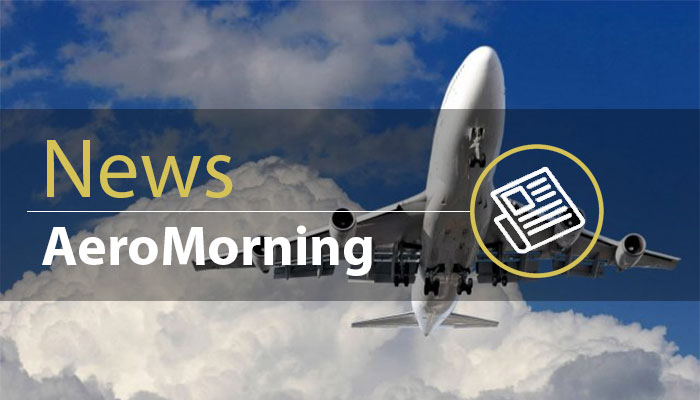Mechanics who work on planes must follow a specific aircraft maintenance process that depends on time frames. Many are also starting to work with advanced technologies to improve their methods. Here’s a closer look at what mechanics must do to keep planes ready to fly.
Follow a Letter-Based Framework
All planes go through inspections associated with a letter-based system. The checks have grades from A-D, depending on how intensive they are. Inspections also occur before and after each flight.
Line Maintenance Checks
These inspections happen routinely and go by several other names. Those include overnight checks, service checks, and post-flight and pre-flight inspections. They usually occur outdoors at the airport gate with few tools.
These checks examine aspects like the wheels, brakes and fluid levels. They usually happen after every 24 to 60 hours of flight time. However, the exact timing varies depending on the operator.
A Checks
These inspections typically happen after every 400-600 hours of flight time or 200-300 journeys. People usually do them in hangars and may carry them out at night for minimal disruption. A check usually takes at least 10 hours, depending on the plane’s needs.
During an A check, maintenance technicians inspect the plane’s interior and examine the outside for signs of corrosion, missing parts or damage. They may also verify that the parking brake accumulator has the correct pressure and that the plane’s emergency lights work.
B Checks
B checks have progressively become a less-common part of the aircraft maintenance process. That’s because recommendations for some newer planes, such as the Boeing 737-700, don’t require separate B checks. Instead, technicians can carry out some measures formerly part of dedicated B checks when they do A checks.
However, when a plane needs a B check, it happens every six to eight months and takes 160-180 hours to do. Some things examined include the alignment and torquing of the spotlight on the nose’s landing gear and the overall condition of the wheel well’s hydraulic tubing.
C Checks
These inspections require aircraft technicians to check most of a plane’s parts. They also take the vehicle out of use for at least a week. C checks usually take about 6,000 hours, and they often require the plane to go to specialised facilities that have the equipment, supplies and labour force available to do them.
However, some parts of the aircraft maintenance process could change, especially as technologies become more advanced. One European Union-funded project called CompInnova proposed using a robot equipped with a phased array and infrared thermography sensors for inspections. The researchers believed this approach could make C and D checks more efficient by accelerating how people examine planes for damage.
D Checks
D checks are the most invasive type of plane inspection, and they only happen every six to 10 years. They take several weeks to do and could cost operators more than a million dollars. That’s why, after some planes have a few D checks, people determine that buying a new one may be more cost-effective than scheduling another.
One part of a D check involves stripping the plane down to its shell by removing all interior components. This is also when an airline may choose to repaint the exterior or go with an updated design. They’ll also need the right equipment for such a large repainting job.
Having an appropriate air compressor will help. One statistic to check is the unit’s cubic feet-per-minute capabilities since they determine the maximum airflow produced during use. Having enough airflow ensures the spray guns work as expected, getting the work done as efficiently as possible.
Bring Emerging Technologies Into the Aircraft Maintenance Process
Aircraft maintenance technicians should also stay abreast of how newer technologies could improve how they do their jobs. Here are some examples of what’s possible.
AI Enables a Move Away From Time-Based Maintenance
Researchers from Delft University of Technology in The Netherlands led a project that showed how using artificial intelligence (AI) could improve aircraft maintenance scheduling. Those inspections happen after a certain number of trips or hours in the air.
However, this study involved working toward a different system based on continuous monitoring and predictive analytics. Team members believed this would help prevent waste because it would enable maintenance to occur at precisely the appropriate time for an individual plane.
Augmented Reality Enhances Processes and Improves Learning
Augmented reality (AR) is also emerging as a promising technology for changing the existing aircraft maintenance process. A Hungarian startup called AerinX has a solution that projects a plane’s upkeep history onto the hull when a person wears AR glasses. People can also see the location and size of any current damage.
Some airlines have also started using augmented reality in their training programs. This enables learners to move around highly realistic, digitised versions of planes rather than working on physical aircraft. That can save money for educators and eliminate the risk of damage.
AI and Digital Scanners Accelerate Engine Checks
An option used for engine maintenance at Rolls-Royce involves using the cloud-based Intelligent Borescope tool and app. A single aeroplane engine has approximately 20,000 components. The people who worked on the Rolls-Royce project believe it’ll make inspections more efficient, particularly by allowing for consistent data capture.
That’s because the tool’s tip has a scanner that creates 3D images from the inputted data. It also has image-processing capabilities similar to those in facial recognition apps. It maps each plane engine blade to check for irregularities. A technician reviews and approves the outcome after the AI-scanning phase finishes. However, it only takes 10 minutes to complete that step, which used to require 90 minutes.
Drones Conduct Thorough Checks Efficiently
A partnership between KLM Royal Dutch Airlines and Dutch startup Mainblades involves using drones to examine aeroplanes. Each drone has a laser scanner and onboard high-definition camera, allowing it to quickly take footage of the plane’s exterior, including any abnormalities. KLM will initially deploy them for general exterior checks and to examine planes after lightning strikes.
Planes can take up to 12 hours after damage occurs to get cleared for takeoff again. That’s one of the reasons why airline executives are so motivated to use drones and other technologies to speed up the process without compromising safety.
These examples show why aircraft technicians must stay on the cutting edge of tech developments and be willing to try these options when possible. Airline decision-makers increasingly see technology as essential for improving the aircraft maintenance process. Technicians that know about relevant developments will have an easier time finding and keeping jobs.
Mechanics Are Essential to the Aircraft Maintenance Process
This overview explains what mechanics must do to keep aeroplanes in flight-worthy condition and how high-tech developments may bring some changes. Even as technologies become more advanced, people with specialised skills will remain essential for aircraft safety and performance.










Be the first to comment on "Here’s How Mechanics Keep Aeroplanes Flight-Ready"